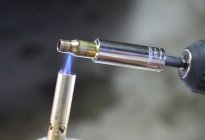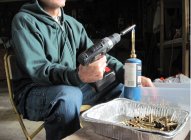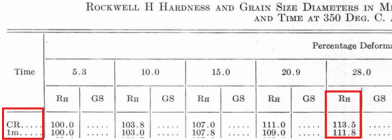TheCZKid
Silver $$ Contributor
I agree with the dark room and drill motor, over a pencil style torch head. I've got an annealing machine, and it's more of a PIA to get things consistent in mine than it's worth, unfortunately. When you get the process down, it goes pretty fast, and is WAY more consistent for me than my machine. I don't have a super expensive machine, so maybe If I spent a lot more money, it would be worth it.
I mainly anneal 223 / 5.56 base size cases, and find a 3/8" nut driver in my drill motor works excellent! Just use the nut drivers with the 6 sided bases, that fit drills, and use the size that fits your case head. Heat with flame from inner blue point just on the base of the neck, until the neck and top of shoulder turn a dull red, and drop on a cookie sheet, or in a bowl of water.
I mainly anneal 223 / 5.56 base size cases, and find a 3/8" nut driver in my drill motor works excellent! Just use the nut drivers with the 6 sided bases, that fit drills, and use the size that fits your case head. Heat with flame from inner blue point just on the base of the neck, until the neck and top of shoulder turn a dull red, and drop on a cookie sheet, or in a bowl of water.


















